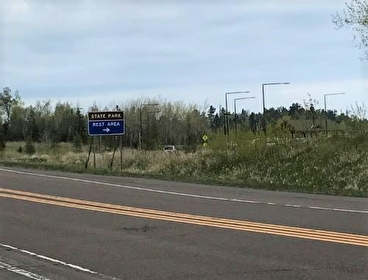
Access to Tourism and Outdoor Recreation in Rural Areas

Xinyi (Lisa) Qian, Tourism Center Director, Extension
Area of Expertise: Transportation Planning & Policy
Tourism and outdoor recreation are major contributors to the national economy. Tourism represents nearly 3 percent of the national gross domestic product, and rural sightseeing is a major driver of leisure travel. Outdoor recreation accounts for nearly 2 percent of GDP and almost 2.5 percent of Minnesota’s state GDP. Rural America is the host for much of this tourism and outdoor recreation, and the industries are without a doubt a significant economic driver for many areas. Transportation and rural tourism are inextricably linked. Transportation helps shape the foundational mission of natural resource management—balancing preservation of resources with the use and enjoyment of those spaces. Ensuring that rural destinations have the needed resources, collaborations, and transportation infrastructure in place as they evolve will be a critical step in securing both the economic viability of many communities and the future of precious environmental resources.
Transportation planning and management in rural communities with sizable tourism and outdoor recreation activities needs a systems-thinking approach to address the relationships between transportation infrastructure mobility, accessibility, equity, and livability, with a keen focus on both residents’ and visitors’ needs.

Rural communities benefit from the economic opportunities of increased tourism and outdoor recreation, but they also face a variety of unique transportation challenges. For example, there is often a lack of adequate funding to build and maintain the infrastructure needed to accommodate large seasonal demands. This challenge encompasses both providing access to destinations and managing visitors’ flow within rural communities. To address these issues, some recreation sites and their rural gateway communities have invested in collaborative efforts to coordinate transportation for visitors. At Zion National Park, for example, National Park Service officials and surrounding community stakeholders have worked for more than 20 years to create and maintain a shuttle system within the park that reduces vehicular traffic and impact while maintaining access. Other parks, such as Denali National Park, have set limits on the number of users able to access particularly sensitive areas. Establishing effective collaborations between residents, visitors, and public agencies is an essential step to building effective, localized solutions.
There is also a need for the planning and installation of adequate technology to ensure electric vehicles (EVs) and connected and automated vehicles (CAVs) will work properly in rural areas and meet growth in demand. A lack of EV charging capacity, for example, may mean a decline in visitors as EV uptake in the general population grows and those users choose to visit places where they have access to charging. Addressing this issue could include ensuring that rural destinations are adequately covered in new national funding programs such as the National Electric Vehicle Infrastructure program or that rural communities take advantage of other funding streams, such as the U.S. Department of Agriculture’s Community Facilities Programs, to secure needed investments. Failure to address these challenges will limit the ability of rural destinations to sustainably grow or serve the needs of visitors.
Critically, transportation issues not only affect visitors’ and residents’ mobility, they also directly impact the community’s general livability. Transportation systems can affect the development and siting of affordable housing, reshape economic development plans, and play a major role in resident and visitor access to services such as rural health care. Transportation planning and management in rural communities with sizable tourism and outdoor recreation activities needs a systems-thinking approach to address the relationships between transportation infrastructure mobility, accessibility, equity, and livability, with a keen focus on both residents’ and visitors’ needs. As with the construction and maintenance of large infrastructure assets, smaller communities often lack the resources or technical capacity to take on the needed level of integrated planning. Some communities have adopted regional approaches to planning and management, mirroring similar practices undertaken in major metro areas. In 2014, for example, the Conservation Fund, in collaboration with the Federal Highway Administration, conducted a livability assessment in the gateway communities to the Shiawassee National Wildlife Refuge, including Saginaw, Michigan, and surrounding towns. This study set up a regionally coordinated plan to link recreation, economic development, and transportation together, supporting smaller rural communities that lack the capacity to undertake such an effort on their own.
Finally, transportation investments must be made to ensure that the widest population possible can access and enjoy our shared natural resources. This includes in-park and on-site investments in ADA-accessible trails and facilities. Ensuring that active transportation investments in particular have accessibility for all users front and center is essential to creating universal access. For tourism and outdoor recreation communities, creating sites that can attract and welcome a wide range of users is critical for long-term success.
It is essential that Minnesota and its many outdoor recreation and tourism-driven communities work together to forecast and address future transportation challenges that could prevent the sustainable use of our natural resources, slow the economic benefit of tourism and outdoor recreation, and reduce the livability of those areas for residents.